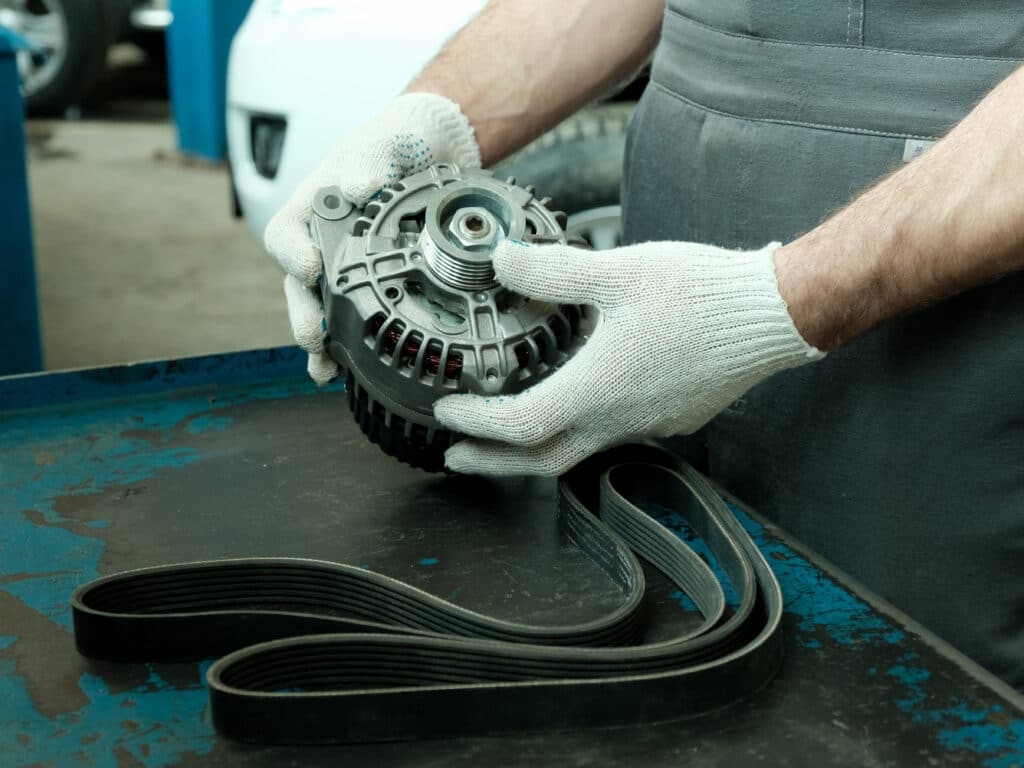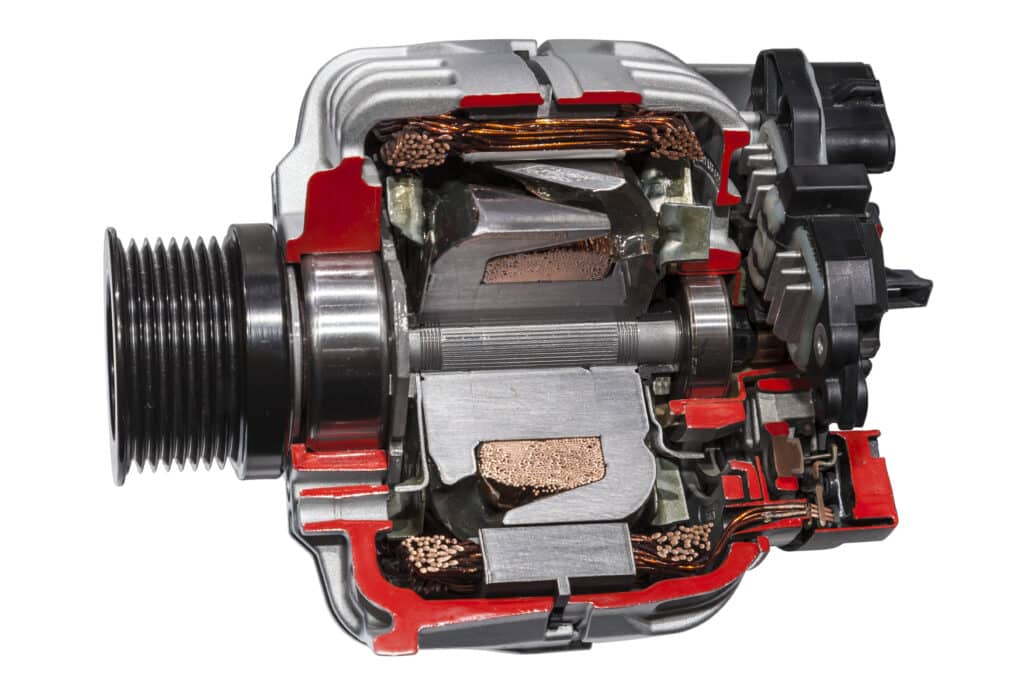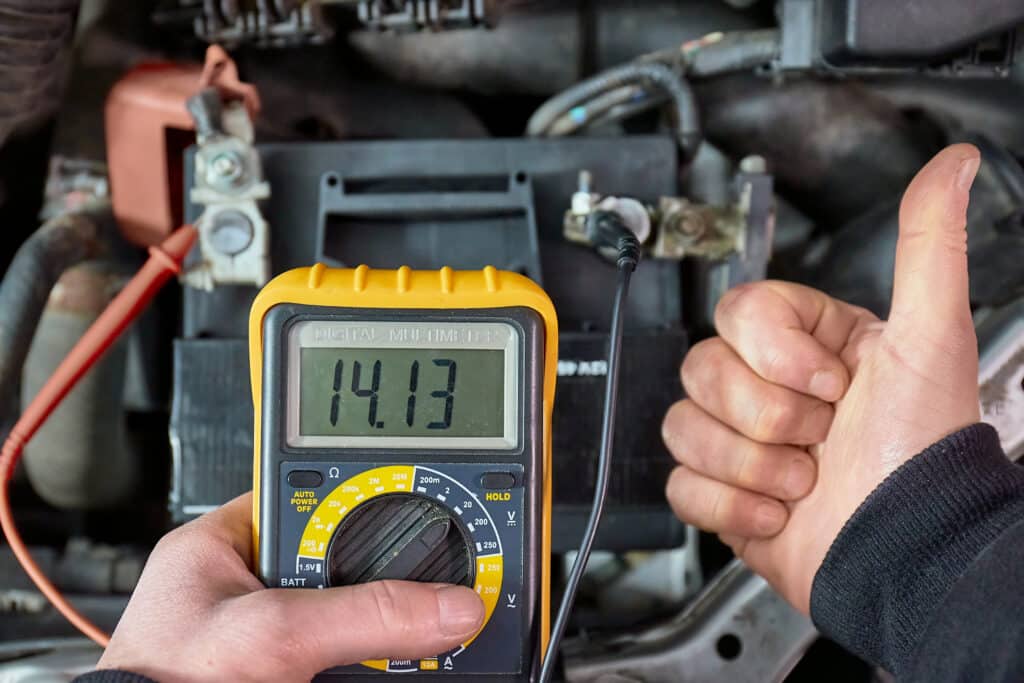Do have issues with your battery? Have you considered some problems related to your alternator? Understand how the power supply in your car works with this article and start troubleshooting!
GAIN MORE CONTROL OF YOUR CAR WITH THE CARLY FEATURES
Check the exact pricing of Carly for your car brand!

Fast International Shipping with DHL

14 days adaptor return policy

Excellent customer support

Lifetime warranty in the hardware
SEEN IN
The increasing importance of the alternator
In the past, the task of the alternator was limited to generating voltage for the light. The reason is that older vehicles usually did not have an engine control unit or other large electrical consumers, except the vehicle’s headlights, backlights, interior light, and the backlight of the speedometer.

However, according to modern demands, the alternator had to supply increasing power. Therefore, the alternator needed some next evolution in order to cover additional electrical consumers in modern cars.
Modern alternators can regulate the voltage supply very precisely in order to provide electricity as efficiently as possible while being able to charge the battery.
What is an alternator?
Alternators are components that have been used in technology for a very long time for generating electrical energy. The operating principle is based on the principle of electromagnetic induction. This means whenever an electrical conductor moves through a magnetic field, a voltage is generated inside the electrical conductor.
The conventional structure, which is used to convert kinetic energy into electrical energy, is also used in cars. Here, the rotational energy is provided by the combustion engine. The energy is transmitted from the engine via the keel belt or the V-ribbed belt.
Alternator components
In the conventional sense, the component usually consists of the following parts:

The rotor:
The task of the rotor is to generate a magnetic field. The strength of the magnetic field depends on how much current flows through the conductor that is on the rotor.
The alternator regulator:
The current for the rotor is controlled by the so-called alternator regulator. In addition, the controller is responsible for monitoring and also controlling the charging process of the battery. The controller also controls how much energy the components installed in the vehicle receive in order to perform their function.
The stator winding:
As soon as the rotor starts to rotate, an AC voltage is generated in the stator winding. However, since a vehicle only operates with a DC voltage, a rectifier is necessary.
The rectifier:
As already mentioned, a vehicle needs a DC voltage. In principle, a rectifier consists of an array of several diodes which allow a current to pass in one direction only. With the help of these diodes, the generated AC voltage can be converted into a DC voltage. The DC voltage is then fed into the vehicle’s electrical system.
Bad alternator symptoms
Battery warning light in the dashboard:
When insufficient power is generated or the battery cannot be charged due to a defect, the battery warning light illuminates in the vehicle’s dashboard.
Car won’t start / battery constantly empty:
In the event of a defect, the battery can usually no longer be charged properly. As a result, the battery charge level may be too low to start the engine.
Issues with electrical components on the vehicle:
As soon as the electrical voltage supply is low, the electrical systems in the vehicle are no longer supplied with sufficient voltage. As a result, these systems may fail completely or show error messages.
How to test an alternator?

Using a multimeter, it is very easy to check whether the alternators charging voltage is good. Most vehicles have positive and negative terminals in the engine compartment. If you cannot find these terminals, you can also use the battery poles for measuring.
Now, measure the voltage using the multimeter while the motor is running. The measured voltage should be between 13.6 V and 14.8 V while consumers such as the light or fan are switched on. If the reading is significantly lower, there is usually a problem with the alternator.
Diagnosis and repair of faults on the alternator
f you suspect any issue, we recommend running a diagnosis using an OBD2 adapter, first. This will read your error memory from your ECUs. In many cases you can find out when an error (DTC) has been detected and what specifically the error is.
Often, when there is a problem related to the alternator, besides of faults related to the alternator, you may also find faults related to the voltage supply of other components.
OBD adapters and diagnostic equipment can be used to diagnose a variety of engine problems, regardless of make or model. The issues found vary between simple sensor defects and more complex problems, such as turbocharger defects. In some specific cases, an OBD adapter can help fixing an issue. Sometimes just clearing old trouble codes (DTCs) will help, saving you a trip to the repair shop.
Whether you like fixing stuff yourself or you are a professional, a diagnostic device is a valuable tool that every driver should have in his car.
What bad alternator cost should I consider?
The component cost can vary greatly depending on the make, model and performance of the vehicle. On average, the price of a spare part can range from US$ 100 to US$ 500.
The price also varies according to the condition of the spare part and where it is purchased. Thus, a new part is usually more expensive than a used spare part.

